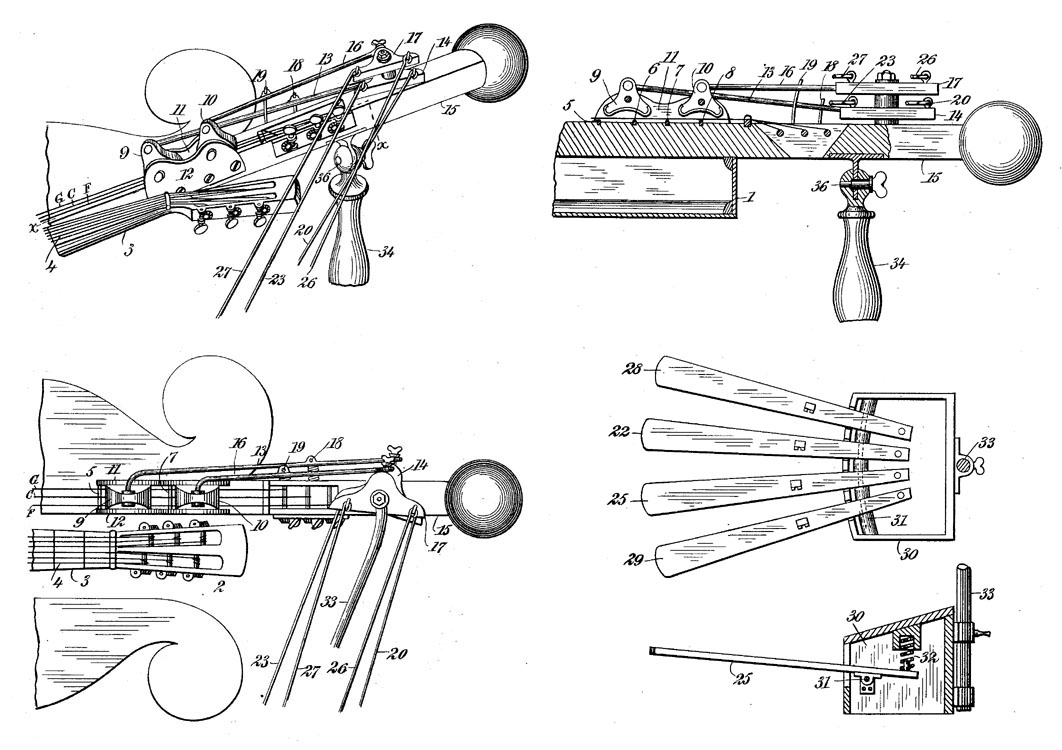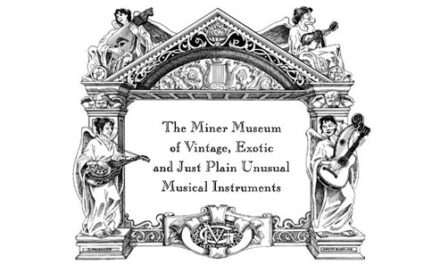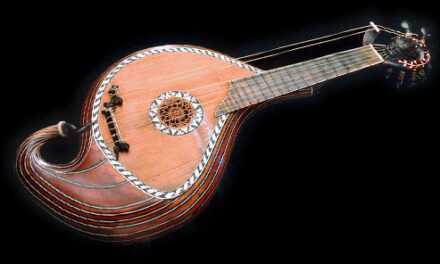Here’s the second of those latest patent finds I mentioned a week ago. This one I purchased on eBay in July from one of those dealers who prints out all sorts of patents on fancy paper and binds them in a folder to look nice. Overkill for my purposes, but it was the only way I could learn the patent number (they hide it in the listing, for obvious reasons) – but well worth the price.
I suppose it’s time to go back through all the patent search engines, and just type in again “Musical Instrument.” Or “Stringed Instrument” – as those are the two most common names that crazy harp guitar inventions (and so much more) are found under. As many times as I’ve done it in the past, somehow, more keep showing up. Feel free to volunteer for this task, anyone! (Yes, I’m serious – The Foundation needs you!)

Anyway, this treasure is Patent #751,880, granted to one Edward Slade Stevenson of Kansas in 1904 – just prior to the previously blogged Funk apparatus. This invention is actually a whole intricate harp guitar set-up (some assembly required). Both the harp guitar and a stool are mounted to the frame in playing position (not that I’d want to play it in that position!) in order for there to be a secure way to mount and operate the complex pitch-changing apparatus.
The harp guitar itself is unusual right off the bat, as it is a “lyre” form, with two hollow arms projecting out of each side. I particularly like the design and the F-hole touch in each one, but not what looks like super tight clearance for fretting. Stevenson doesn’t elaborate on the purpose of this design, the intent of which was surely the ubiquitous “better, louder, more harp-like tone.”
No, he’s way more interested in devising the most complicated way possible to get the largest amount of chromatic notes out of the fewest amount of sub-basses…and he did it! With only three subs (G, F & C), he achieves fifteen chromatic notes – 3 more than he really needed. It would have been simpler to have just fretted the whole thing.

But no, the point is that all 15 notes are available as open strings depending on which of four pedals you step on. These connect to, not four, but just two fretting bars – as each rocks on its roller to press down on one or the other fret it is mounted over. With the two rockers in line, it thus covers four frets (beyond the open strings). All 3 subs are engaged and affected when each pedal is depressed, and one simply plays the appropriate string.
Technically, it could work pretty well, as long as Stevenson made house calls to calibrate each one. But can you imagine trying to get a noiseless recording out of such a thing?! It would have to sound like Muddy and Discordant Hammer-on City.
Still, I bet he built a prototype, as it’s so detailed – although maybe not, because doesn’t it look too M. C. Escher-like? As if it cannot actually exist in 3 dimensions? Still, you gotta love the Stevenson “foot-operated, sub-bass pitch-changing, dual-hollow arm harp guitar”!





